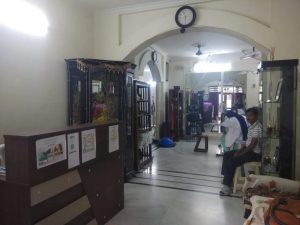Integrating third-party packages into a Django project can significantly enhance its functionality, providing features that save development time and effort. However, these integrations often come with their own set of challenges. Whether you’re working with a django development agency or independently, understanding how to navigate these issues is crucial for maintaining a smooth development process. This guide will explore common problems, best practices, troubleshooting steps, and maintenance tips for integrating third-party packages in Django.
Common Issues with Third-Party Packages
Compatibility Issues
Compatibility issues are among the most frequent problems developers encounter when integrating third-party packages into Django projects. These issues arise when the third-party packages are not fully compatible with your Django version or other installed packages. For instance, a package designed for Django 2.x might not work correctly with Django 3.x. These conflicts can lead to unexpected errors, deprecated functions, or even complete failure of your application to run. To mitigate compatibility issues, it’s essential to thoroughly check the package documentation for compatibility information before integrating it into your project. Additionally, using tools like pip freeze can help you monitor the exact versions of installed packages and ensure they align with your Django version.
Dependency Conflicts
Dependency conflicts occur when different packages require different versions of the same dependency. This can lead to a “dependency hell” situation, where resolving conflicts becomes exceedingly difficult. For example, you might find that one package requires Django==2.2 while another requires Django==3.1, making it impossible to satisfy both requirements simultaneously. To manage these conflicts effectively, using tools like pipenv or poetry can help by isolating dependencies within virtual environments. These tools create a contained environment for each project, ensuring that dependency requirements do not clash across different projects.
Configuration Problems
Improper configuration of third-party packages can cause significant functionality issues. Each package often comes with specific configuration requirements that need to be met for it to work correctly. For instance, certain packages may require additional settings in your settings.py file, or specific middleware to be added to your Django middleware stack. Carefully following the installation and configuration instructions provided in the package documentation is essential. Overlooking a single configuration step can lead to issues that are hard to diagnose and fix. Ensuring you understand the configuration requirements and implementing them correctly can save a lot of troubleshooting time later.
Best Practices for Integrating Third-Party Packages
Thorough Research
Before integrating a third-party package, conducting thorough research is paramount. Look into the package’s documentation, community reviews, and recent updates. A package with comprehensive documentation is likely to be easier to integrate and troubleshoot. Community reviews can provide insights into common issues and their resolutions. Additionally, check the package’s update frequency. An actively maintained package is more likely to stay compatible with the latest Django versions and receive timely bug fixes. This diligence reduces the risk of integrating poorly supported or outdated packages into your project.
Using Virtual Environments
Using virtual environments is a best practice for managing dependencies in Django projects. Virtual environments create isolated spaces for each project, preventing conflicts between packages. Tools like virtualenv and pipenv are commonly used for this purpose. By using a virtual environment, you ensure that your project’s dependencies do not interfere with other projects or the system-wide Python installation. This isolation is crucial for maintaining a clean and manageable development environment, especially when dealing with multiple projects that may have different dependency requirements.
Testing Before Integration
Before fully integrating a third-party package into your Django project, conducting thorough testing is essential. Create a separate branch or a sandbox environment to test the package’s functionality and compatibility with your project. This approach allows you to identify potential issues early in the integration process without affecting the main project. During testing, pay attention to how the package interacts with your existing codebase and whether it introduces any new issues. Thorough testing helps ensure that the package works as expected and does not cause any unintended side effects.
Troubleshooting Steps
Identifying the Source of the Issue
When encountering issues with third-party packages, the first step is to identify the source of the problem. This can involve reviewing error messages, checking logs, and isolating the problematic code. By systematically narrowing down the issue, you can pinpoint whether it lies with the package itself or its integration with your project. For example, if a specific view stops working after integrating a new package, try disabling the package to see if the issue persists. This process of elimination helps you isolate the root cause and focus your troubleshooting efforts more effectively.
Consulting Documentation and Community Support
Documentation and community support are invaluable resources when troubleshooting third-party package issues. Comprehensive documentation can provide detailed guidance on resolving common problems, while community forums and discussion boards offer insights from other developers who have faced similar challenges. If you’re working with a Django development agency, their expertise can also be a significant asset in troubleshooting. Agencies often have experience with a wide range of packages and can provide practical solutions based on their prior projects. Don’t hesitate to reach out to the community or consult an expert when faced with challenging issues.
Debugging and Logging
Effective debugging and logging are crucial for resolving integration issues. Utilize Django’s built-in logging framework to capture detailed information about the errors occurring in your project. Logs can provide a wealth of information about what went wrong and where. Additionally, leverage debugging tools such as Django Debug Toolbar to gain insights into the application’s behavior and identify the root cause of the problem. These tools allow you to inspect the request and response cycle, view SQL queries, and understand the overall performance of your application. Detailed logs and debugging tools are essential for identifying and fixing complex issues.
Managing Updates and Maintenance
Regularly Updating Packages
Keeping third-party packages up to date is essential for maintaining a secure and functional Django project. Regular updates often include bug fixes, security patches, and new features. Tools like pip can help manage package updates, ensuring your project benefits from the latest improvements. However, always test updates in a separate environment before deploying them to production. This precaution helps ensure that updates do not introduce new issues or break existing functionality.
Handling Deprecated Packages
Deprecated packages pose a significant risk to project stability and security. When a package is no longer maintained or supported, it is crucial to find alternatives or fork the package to continue its maintenance. Staying informed about the lifecycle of your third-party packages helps mitigate risks associated with deprecated dependencies. Regularly review the status of your dependencies and plan for replacements if a package shows signs of being deprecated. Being proactive in managing deprecated packages helps maintain the long-term health and security of your project.
Automating Dependency Management
Automating dependency management can streamline the process of keeping packages up to date. Tools like Dependabot and Renovate automate the detection of outdated dependencies and create pull requests to update them. This ensures your project remains secure and reduces the manual effort required for package maintenance. Automated tools help you stay on top of updates and minimize the risk of running outdated or vulnerable packages in your project. By integrating these tools into your development workflow, you can focus more on building features and less on managing dependencies.
Conclusion
Integrating third-party packages into your Django project can greatly enhance its capabilities, but it also comes with challenges that require careful management. Whether you’re part of a django development company or working independently, following best practices and employing effective troubleshooting techniques are essential for a successful integration. By conducting thorough research, using virtual environments, testing extensively, and staying proactive with updates and maintenance, you can navigate the complexities of third-party package integration and build robust, scalable Django applications. Partnering with a reputable Django development agency can provide additional expertise and support, ensuring your project remains on track and achieves its full potential.
By addressing common setup issues, authentication problems, serialization errors, and performance bottlenecks, you can ensure your DRF projects run smoothly and efficiently. Utilizing professional Django development services can further streamline your development process, providing expert guidance and support. With the right approach and resources, you can overcome the challenges of third-party package integration and create high-quality Django applications that meet your project goals.








